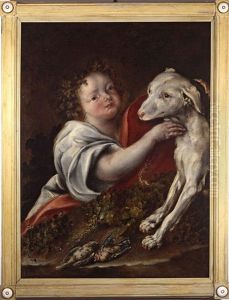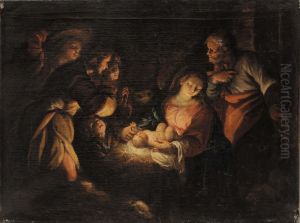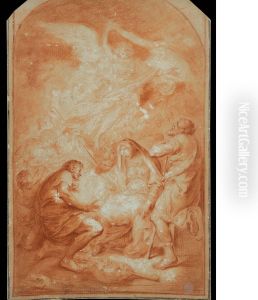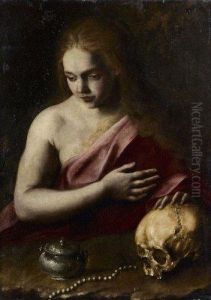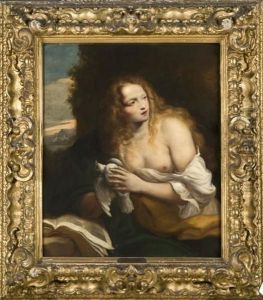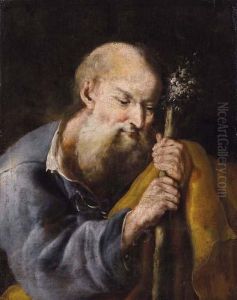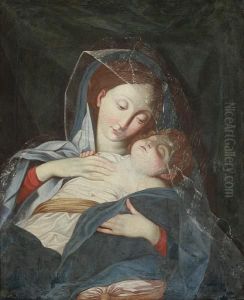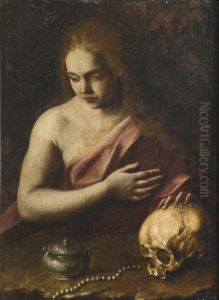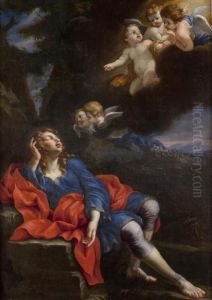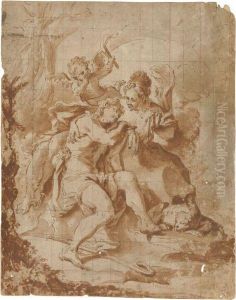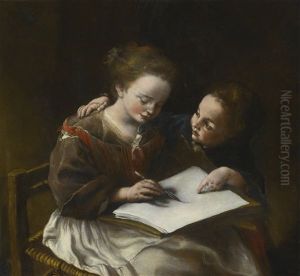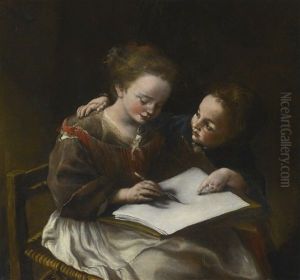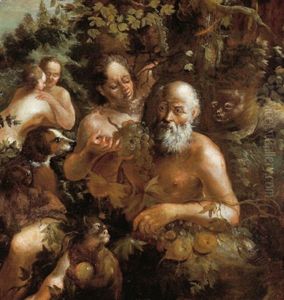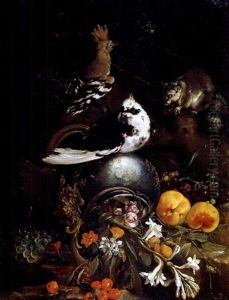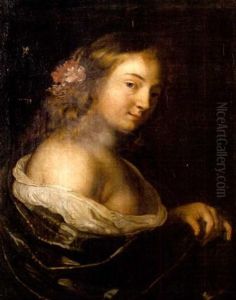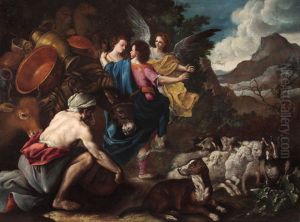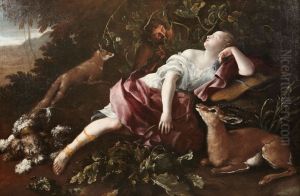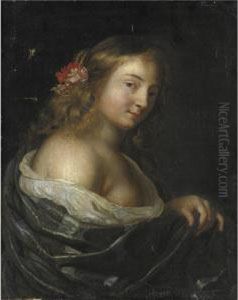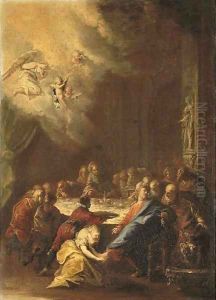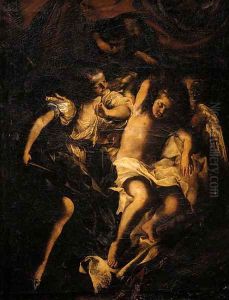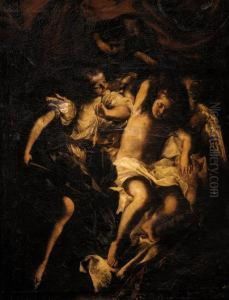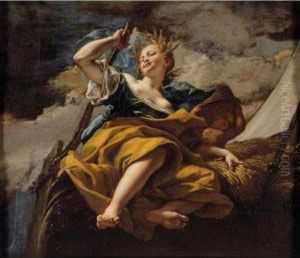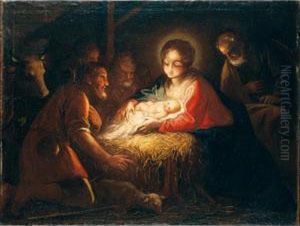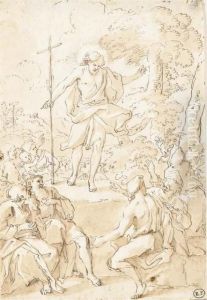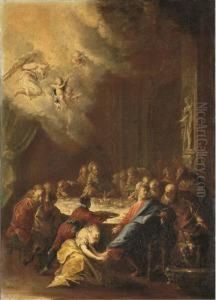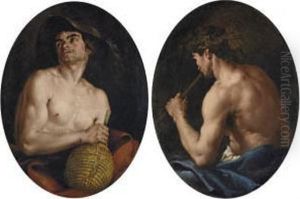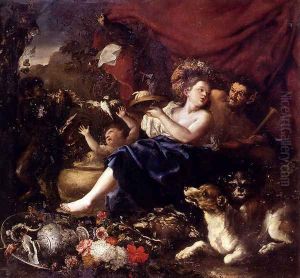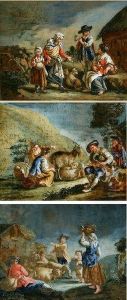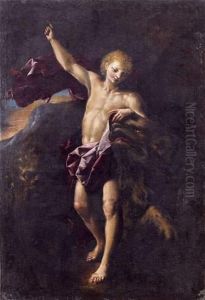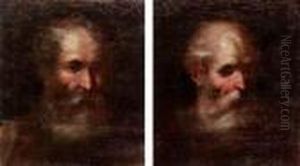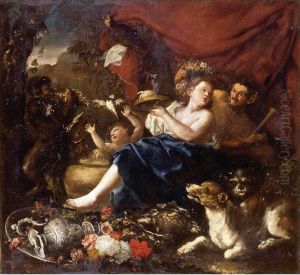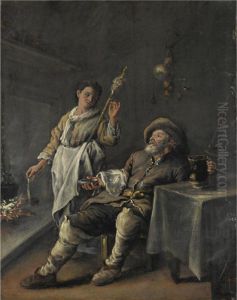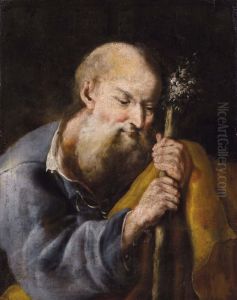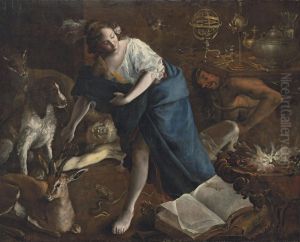Domenico Guidobono Paintings
Domenico Guidobono was an Italian painter of the Baroque period, primarily active in Northern Italy, particularly in his native city of Savona and in Turin. Born in 1668 into a family of artists, Guidobono was trained by his father, a painter named Antonio Guidobono. His brother, Bartolomeo Guidobono, was also a painter, and the two brothers often collaborated on artistic projects.
Domenico was known for his exceptional skill in fresco and quadratura painting — a technique used to create architectural illusions on ceilings and walls. His work often included allegorical and mythological scenes, characterized by soft, delicate color palettes and graceful figures, which were influenced by the Genoese school of painting, particularly by the works of Luca Cambiaso and Giovanni Benedetto Castiglione.
In the late 17th and early 18th centuries, Guidobono became a sought-after artist for his ability to integrate his art seamlessly with the architecture of the spaces he was commissioned to decorate. He worked on numerous churches and palaces where his frescoes and altar pieces can still be admired today. Notable works include the frescoes in the Sanctuary of Our Lady of Mercy in Savona and the Palazzo Tursi in Genoa.
During his time in Turin, he worked for the royal house of Savoy, contributing to the embellishment of their residences. Domenico's style evolved over the years, showing the influences of the Roman Baroque and the emerging Rococo style, which was becoming popular in Europe at the time.
Domenico Guidobono's art was appreciated for its charm and elegance, and he was an integral part of the Baroque art movement in Northern Italy. He continued to work and receive commissions until his death in 1746. His legacy lives on through his contributions to the Italian Baroque, and his works remain an important part of Italy's cultural heritage.
